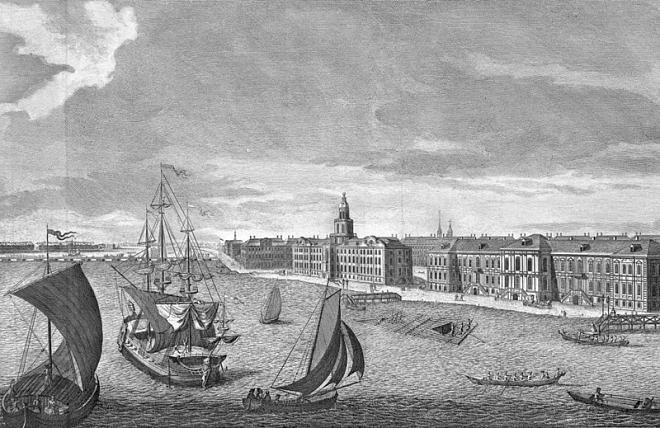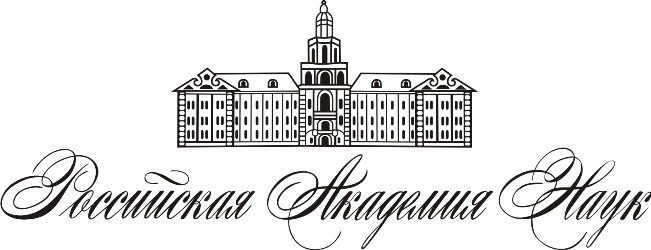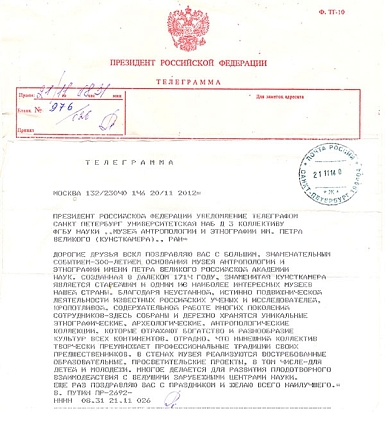- Visit Us Safely
- Opening Hours
- Getting Here
- Admission and Tickets
- Exhibitions
- Virtual 3D Tour
- Kunstkamera Mobile Guide
- History of the Kunstkamera
- The Kunstkamera: all knowledge of the world in one building
- Establishment of the Kunstkamera in 1714
- The Kunstkamera as part of the Academy of Sciences
- The Kunstkamera building
- First collections
- Peter the Great's trips to Europe
- Acquisition of collections in Europe: Frederik Ruysch, Albert Seba, Joseph-Guichard Duverney
- The Gottorp (Great Academic) globe
- Siberian expedition of Daniel Gottlieb Messerschmidt
- The Academic detachment of the second Kamchatka expedition (1733-1743)
- 1747 fire in the Kunstkamera
- Fr.-L. Jeallatscbitsch trip to China with a mission of the Academy of Sciences (1753-1756)
- Siberian collections
- Academy of Sciences' expeditions for geographical and economic exploration of Russia (1768-1774)
- Research in the Pacific
- James Cook's collections
- Early Japanese collections
- Russian circumnavigations of the world and collections of the Kunstkamera
- Kunstkamera superintendents
- Explore Collections Online
- Filming and Images Requests FAQs
The Kunstkamera as part of the Academy of Sciences
On January 28, 1724, Peter I issued a decree establishing the Academy of Sciences in Russia. The draft of the decree named the Kunstkamera and the library “integral parts” of the Academy and tools to bolster the work of its members. The document read, “The Academy ought not to have a shortage of necessary tools; the library and natural items storeroom ought to be opened. The head librarian should have a directive power to order books and instruments, which the Academy is needful for, or to arrange that they are made here.”
The 1747 Statute of the Academy of Sciences modified the names of the library and the Kunstkamera by adding the word “Imperial” to them. The head librarian was made accountable directly to the President of the Academy. In addition to the head librarian, the library had petty librarians, assistant librarians, an apothecary, and a “painter of animals and birds” on staff.
In the 1803 Statute of the Academy of Sciences, the Kunstkamera and the library were named “scholarly annexes to the Academy.” In fact, they were more than “annexes”: both institutions played a crucial role in developing the Russian Academy of Sciences, as they spurred the advancements in ethnography, archaeology, anthropology, and other disciplines. Reversely, the expansion of the Kunstkamera and library collections directly depended on the work of the Academy members: not only the acquisition of funds but their organization and cataloging relied on the Academy’s expeditions and research.
In the 1830s, several independent museums emerged from the Kunstkamera museum. These were:
- Mineralogical and Geognostic museum;
- Botanical museum;
- Zoological and Zootomical museum;
- Asian museum;
- Egyptian museum;
- Museum of Numismatics and Antiquities;
- Memorial Cabinet of Peter I;
- Museum of Ethnography and Art.
A Member of the British Parliament, Benjamin Hawes compiled a list of St. Petersburg museums in 1834 in his report on museum rules and regulations worldwide. In 1836, the Statute of the Academy of Sciences approved by Emperor Nicholas I formalized the de-facto transformation of the universal Kunstkamera into several specialized museums. Article 100 of the Statute entrusted the Academy with governance and maintenance of the following museums: “Mineralogical, Botanical, Zoological, and Zootomical with the laboratories; the Botanic Garden, the Numismatic Chamber, the collection of Asian and Egyptian Antiquities, and the Ethnographical Chamber.” This split of the formerly universal Kunstkamera collection into separate museums reflected the professionalization of science and the governance policy. Each newly created museum received its own budget and staff; this gave better prospects for developing a scientific discipline they represented.
In 2014, the Kunstkamera celebrated its 300th anniversary. President of Russia Vladimir Putin congratulated the Museum of Anthropology and Ethnography (the Kunstkamera) of the Russian Academy of Sciences on its jubilee.





